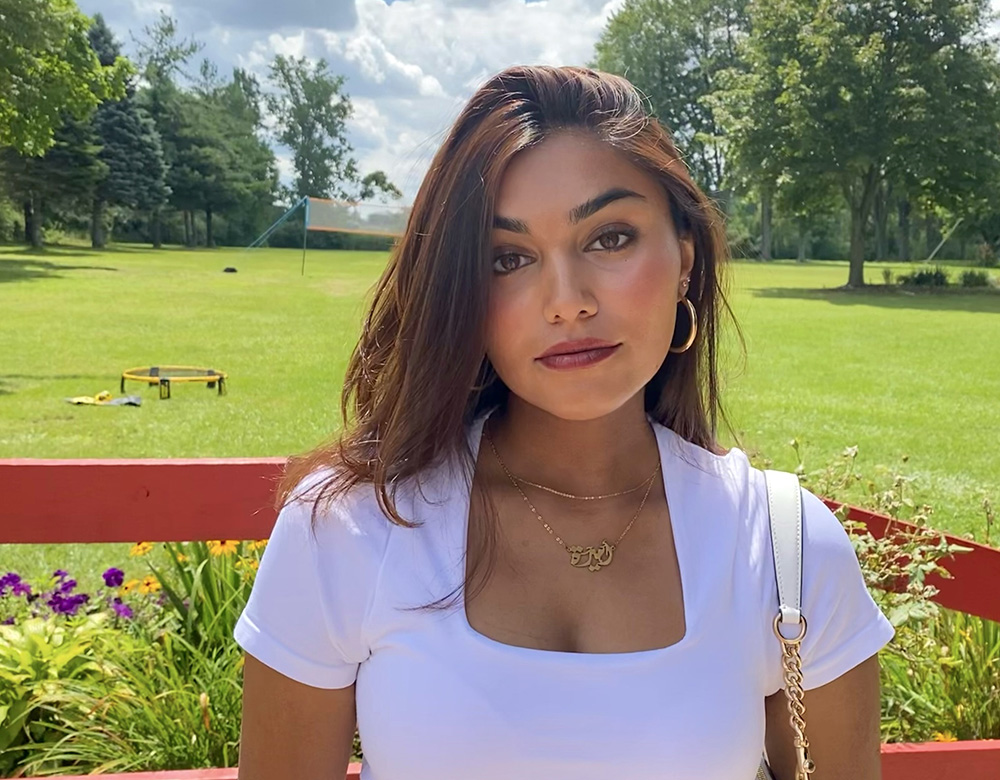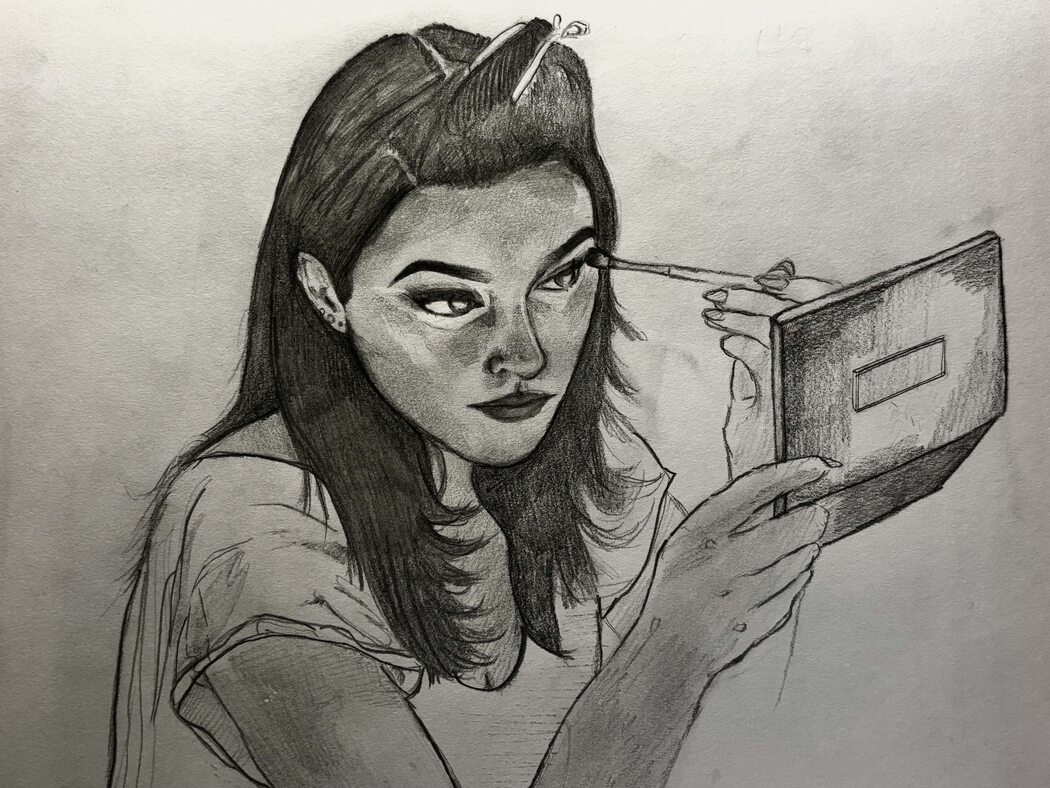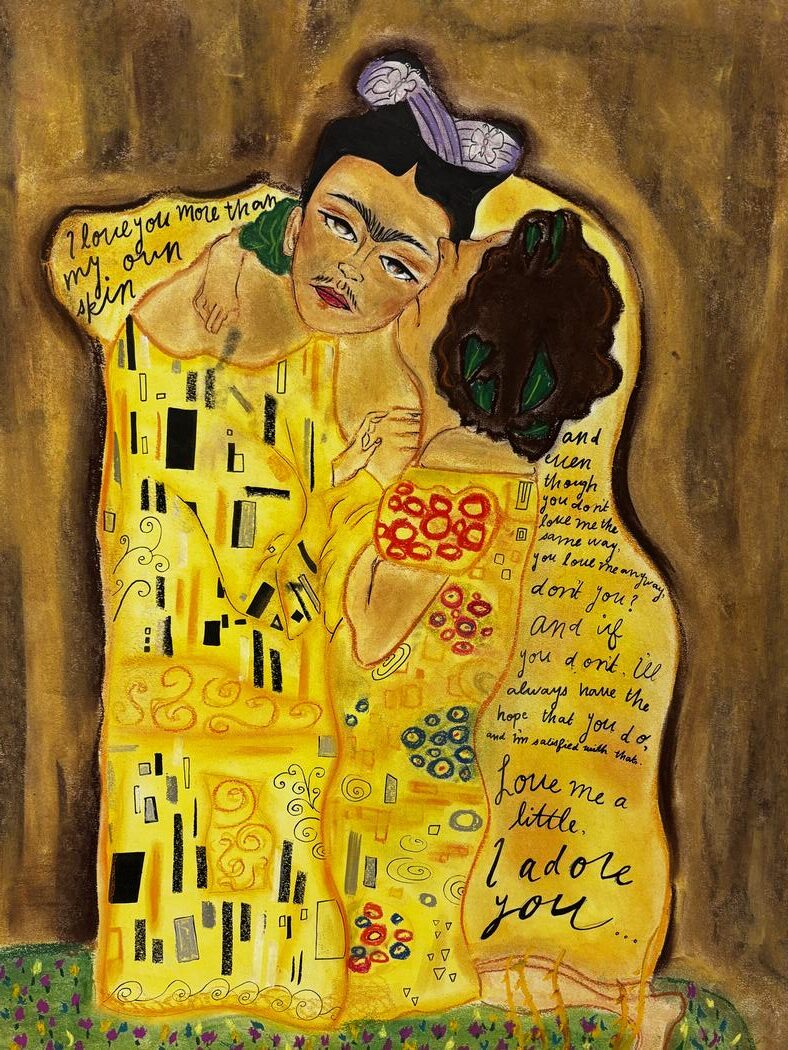Amira Haider
Year of birth: 2003.
Where do you live: Toronto, Ontario.
Your education: BA in Psychology with a Studio Art minor, Western University.
Describe your art in three words: vibrant, nostalgic, dreamy.
Instagram
What inspired you to pursue both Psychology and Studio Art? How do you balance these two areas of study in your creative process?
What inspired me to pursue Psychology is my deep interest in understanding why people are the way they are, particularly how childhood experiences shape who we become. I’ve found that these themes often surface in my artwork as well. Art has been a powerful creative outlet for me since childhood, especially drawing. Although Studio Art wasn’t part of my original academic plan, I took the introductory course in my third year of undergrad with the intention of it being a creative outlet. I realized I had enough space in my schedule to pursue a minor in Studio Art during my final year, and doing so felt like a natural continuation of my creative journey. As I began exploring ways to integrate both fields, I discovered art therapy and have since been volunteering at an art therapy clinic, helping run wellness workshops. This experience has deepened my appreciation for the therapeutic potential of art. I balance these two areas by treating my art as a meditative and reflective practice– one that complements my academic journey. For me, both disciplines are deeply interconnected: psychology helps me understand emotion and behaviour, while art allows me to explore and express it.
Your use of bright, saturated colors is one of the most distinctive elements of your work. What draws you to such vibrant palettes?
I’ve always been drawn to bright, saturated colors because they genuinely make me feel happy. There’s something about vibrant colour palettes that evoke a sense of joy and energy, not just in art, but in my everyday life too. I love how colour can completely change the mood of a piece, and using bold hues helps me in creating artwork that feels uplifting. I think vibrancy naturally catches the eye, but more than that, it reflects how I want to feel and how I hope others might feel when they see my artwork. Surrounding myself with colour has always been comforting, so it feels natural to carry that into my creative process.
How do you believe your background in Psychology influences the themes and emotions expressed in your art?
Psychology has really shaped the way I think about my art. Learning about mental health has given me new ways to understand and express emotions, and it’s made me more intentional with the stories I tell through my work. I want to create art that resonates with people, that makes them feel something. One painting I made was based on an old childhood birthday photo of me, and I wanted it to capture that feeling of nostalgia and whimsy that so many of us associate with being little. Psychology has taught me to look deeper into the human experience, and that shows up in my art through introspection and emotional layering. Both disciplines encourage reflection and storytelling, so my creative process often becomes a way of exploring the psychological themes I care about, like memory and identity.
Can you talk about a particular piece that stands out in your mind as a major turning point in your artistic journey?
One piece that really stands out as a turning point in my artistic journey is my large-scale raspberry painting. It measures 36”x40” and took over 30 hours to complete. It was the first time I felt a deep sense of pride in something I created– I remember stepping back when I was finished and just feeling genuinely proud of the work I had put into it. I loved everything about it: the subject matter, the texture, and especially the rich magenta tones, which are my favorite colours. Raspberries are also my favorite fruit, so the piece felt very personal. It was a moment where I realized how much dedication and emotion I could pour into a painting, and it made me feel more connected to my art than ever before.
What role does personal experience play in your art? Do you see your works as an exploration of your own thoughts and feelings?
Personal experience plays a huge role in my art. A lot of my work is deeply personal in that it reflects who I am. My taste, experiences, and stylistic preferences all naturally come through in what I create. I definitely see my art as an exploration of feelings and subject matter that resonate with me. Whether it’s a memory, or even just a colour palette I’m drawn to, there’s always a part of me embedded in the work. Making art is a way for me to process, reflect, and connect with myself on a deeper level.
Who are your biggest artistic influences, and how have they shaped your current style?
Two of my biggest artistic influences are Frida Kahlo and Claude Monet. I’ve always been inspired by how Frida wove her personal story into her artwork. She didn’t shy away from vulnerability, and that honesty truly resonates with me. I also admire her use of vibrant colours, which is something I try to incorporate into my own style. On the other hand, I’m also drawn to Monet’s work. His focus on natural landscapes and his soft use of pastels have really influenced the dreamier side of my practice. I think my style sits somewhere between those two worlds.
How do you see your art evolving in the future? Are there any new techniques or themes you’re excited to explore?
As I finish off my undergraduate degree, I’ve been reflecting a lot on how much I’ve grown as an artist. I’m really grateful to Western’s Studio Art program for opening me up to so many new styles and techniques I hadn’t explored before. I’m excited to see where my artistic journey leads from here, and I think no matter what direction it takes, creating from personal experience will always be at the core of my work. Lately, I’ve been especially interested in experimenting more with new mediums I was introduced to this year, such as embroidery and silkscreen. Both offer such unique textures and possibilities, and I’m really looking forward to pushing myself creatively in those areas.





Leave a Reply